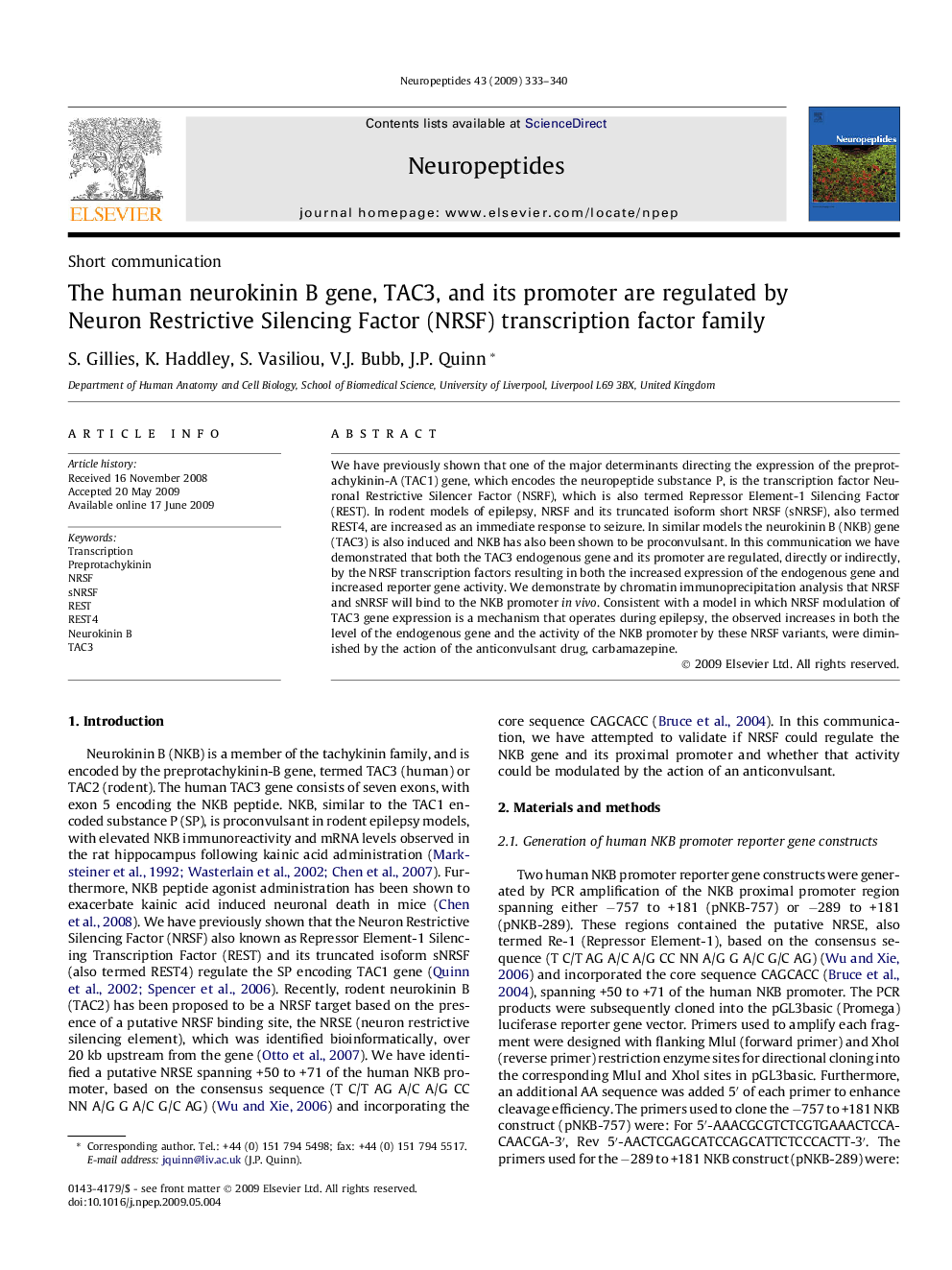| Article ID | Journal | Published Year | Pages | File Type |
|---|---|---|---|---|
| 2808512 | Neuropeptides | 2009 | 8 Pages |
We have previously shown that one of the major determinants directing the expression of the preprotachykinin-A (TAC1) gene, which encodes the neuropeptide substance P, is the transcription factor Neuronal Restrictive Silencer Factor (NSRF), which is also termed Repressor Element-1 Silencing Factor (REST). In rodent models of epilepsy, NRSF and its truncated isoform short NRSF (sNRSF), also termed REST4, are increased as an immediate response to seizure. In similar models the neurokinin B (NKB) gene (TAC3) is also induced and NKB has also been shown to be proconvulsant. In this communication we have demonstrated that both the TAC3 endogenous gene and its promoter are regulated, directly or indirectly, by the NRSF transcription factors resulting in both the increased expression of the endogenous gene and increased reporter gene activity. We demonstrate by chromatin immunoprecipitation analysis that NRSF and sNRSF will bind to the NKB promoter in vivo. Consistent with a model in which NRSF modulation of TAC3 gene expression is a mechanism that operates during epilepsy, the observed increases in both the level of the endogenous gene and the activity of the NKB promoter by these NRSF variants, were diminished by the action of the anticonvulsant drug, carbamazepine.
